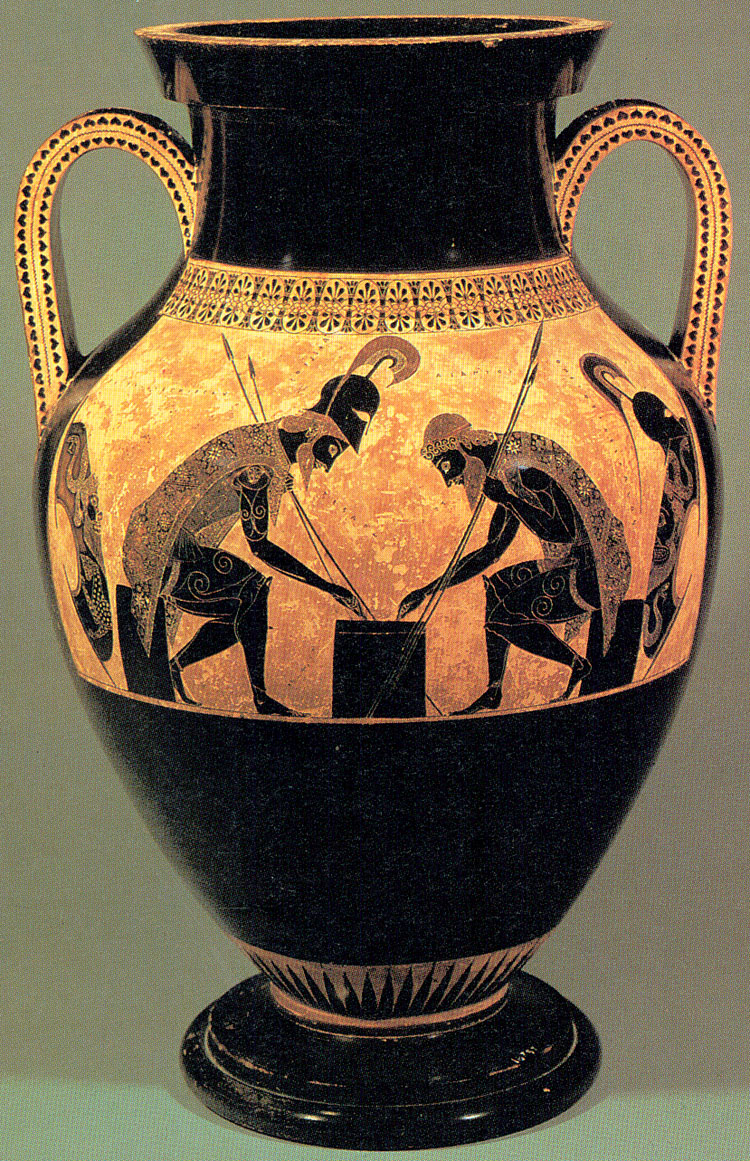During this period greek artwork was heavily influenced by contact with the mesopotamian and egyptian cultures.
The archaic greeks continued painting narrative scenes on ceramic vessels.
Amasis painter dinoysos with maenads.
This was usually integrated into a decorative theme and expressed creatively.
Minoan dolphin urn zografos gallery storytelling with pottery decoration allowed many ancient civilizations to record unique and revealing narratives of their lives as a means to record and reinforce their cultural beliefs for coming generations.
Vase painting fills many of the gaps in literary accounts of greek myth.
Pottery tell us a good deal about daily life.
Greek pottery developed from a mycenaean tradition borrowing both pot forms and decoration.
It remains present in popular culture and one can see its reiterations on film art architecture and literature.
The previous geometric style of vase painting changed to a more naturalistic style.
Increased the size of the figures so there were only two scenes on a vase in both red and black figure vase painting techniques the areas that were painted with slip would be after firing.
However throughout ancient greek civilization art underwent several distinct changes in medium style use and accessibility.
Their ceramic was highly appreciated and was always in demand because of is quality and variety.
Classical and 4th century greek art.
The earliest stylistic period is the geometric lasting from about 1000 to 700 bce this period is further broken down into a proto geometric transition from mycenaean forms.
The making of the greek vase in archaic times about 620 480 bc was very different than the pottery wheel thrown vases of classical times about 480 300 bc.
540 bce archaic period.
Archaic vases were created by stacking multiple thin strips or coils of clay and scoring and slipping these coils together so that the coils would stick together.
Around the 3rd millennium bc in uruk mesopotamia ceramic mosaics.
The archaic greeks continued painting narrative scenes on ceramic vessels but they.
740 bce fig painting returned to greek art during geometric period.
Ancient greece philosophy in visual arts.
Instead of marble headstones heavy large elaborate vases were used for funerary urns presumably by the wealthy in an aristocratic society that.
A mourning scene and procession in honor of the deceased.
Greek culture develop a very refine ceramic art that was imitate by various cultures in ancient times.
Studying ancient history relies on the written record but artifacts from archaeology and art history supplement the book.
Narrative scenes from history or greek mythology.
Humanism man was the center o all things.
A mixture of clay and water used for decorating ceramic vessels.
Narrative depictions of well known myths and legends painted n vases helped to pass these stories on to future generations.
4th quarter of the 6th century b c.
Ancient greek art and culture have become cornerstones of modern western society.
In this period the surface of the pot was completely covered with a network of fine patterns in which circles and arcs predominate.
Abstract motifs on vases i e.










